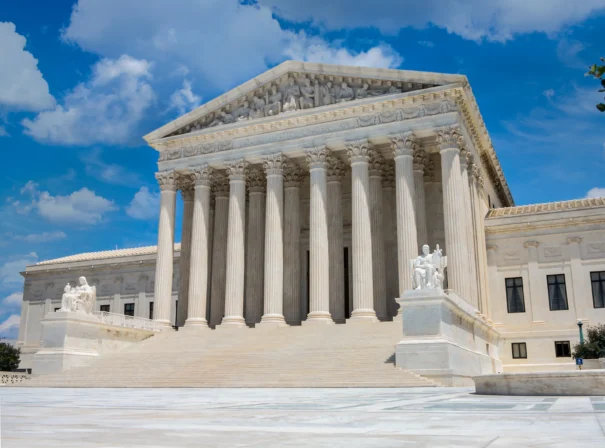
Photo by Fine Photographics
On Thursday, June 13th, the Supreme Court unanimously rejected a challenge to the abortion pill mifepristone. The FDA v. Alliance for Hippocratic Medicine case was brought by the Alliance for Hippocratic Medicine against the Food and Drug Administration in an attempt to restrict mifepristone access. Mifepristone was approved by the FDA in 2000 and is used in over half of all U.S. abortions.
In 2016, the FDA expanded access to allow medical practitioners to prescribe mifepristone and extended the usage period. Then, in 2021, due to the COVID-19 pandemic, the FDA permitted mail distribution from certified sources and in 2023 approved pharmacies also began distributing it. However, following the Supreme Court’s 2022 decision in Dobbs v. Jackson Women’s Health Organization, which eliminated the constitutional right to abortion, several states sought to restrict the sale of mifepristone. The Alliance for Hippocratic Medicine and other anti-abortion groups challenged the FDA’s approval, claiming inadequate consideration of evidence in 2000. These groups were represented by the conservative Christian legal group, Alliance Defending Freedom.
Last year, Texas U.S. District Judge Matthew Kacsmaryk, a Trump appointee, completely invalidated the FDA’s approval of the pill. However, the Supreme Court put that ruling on hold, so the pill remained widely available while litigation continued. Then, the 5th U.S. Circuit Court of Appeals in New Orleans overruled Kacsmaryk’s decision, but upheld restrictions on pill access, including by mail. Both sides then appealed to the Supreme Court. In December, the Supreme Court took up the Biden administration’s appeal in defense of the later FDA decisions. However, it opted against hearing the challenge to the original approval of mifepristone in 2000. The Supreme Court focused only on the later FDA action, including the decision that made the drug available by mail.
The Supreme Court unanimously rejected this challenge to the FDA’s approach to regulating the abortion pill mifepristone. It asserted that the plaintiffs did not have sufficient standing to even challenge the FDA. Justice Brett Kavanaugh, writing for the court, wrote that while plaintiffs have “sincere legal, moral, ideological, and policy objections to elective abortion and to FDA’s relaxed regulation of mifepristone,” that does not mean they have a federal case. The plaintiffs failed to show they had suffered any injury, meaning that “the federal courts are the wrong forum for addressing the plaintiffs’ concerns about FDA’s actions.” He continued, “under Article III of the Constitution, a plaintiff’s desire to make a drug less available for others does not establish standing to sue.” Their ruling will continue to allow mifepristone to be mailed to patients, not require an in person doctor’s visit to be prescribed, allow women to obtain the pill within ten weeks of gestation, and allow health care providers other than physicians to dispense the pill. Overall, their ruling will allow the commonly used drug to remain widely available.
It is important to note that by throwing out the case on such grounds, the court avoided reaching a decision on the legal merits of whether the FDA acted lawfully in lifting various restrictions. This means the same issues could return to the court in another case in the future. There is another abortion case currently before the court, Idaho v. United States, which focuses on whether to enforce Idaho’s Defense of Life Act, which prohibits abortions unless necessary to save the mother’s life. Even though the court suggested it was removing itself from the debate over abortion, litigation is continuing to rage over abortion access and the justices are continuing to play a pivotal role.